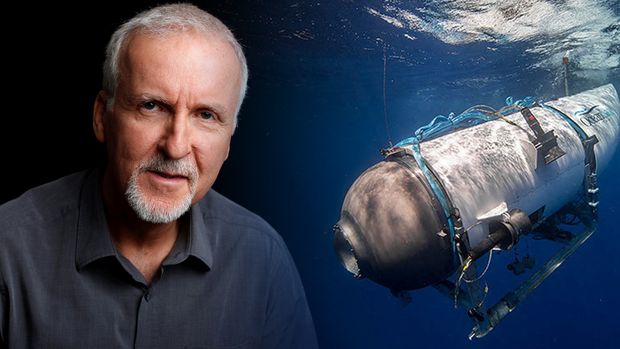James Cameron, the director of the 1997 Hollywood film Titanic, told the BBC that "cut corners" were taken by the team building the submarine that imploded, killing five people.
The Titan sub's parent business, OceanGate, "didn't get certified because they knew they wouldn't pass," according to the statement.
"I was very suspect of the technology that they were using. I wouldn't have gotten in that sub," he said.
Cameron has completed 33 submersible dives to the Titanic wreck.
Did you read this?
Titan was built from carbon fibre and titanium.
In 2012 Cameron used a different technology for the Deepsea Challenger submersible expedition in the Pacific, which took him down to 10,912m (35,800ft), the deepest known oceanic trench.
The Titanic wreck is 3,810m (12,500ft) down.
Cameron said that when he learned the sub had lost both its navigation and communication at the same time, he immediately suspected a disaster.
"I felt in my bones what had happened. For the sub's electronics to fail and its communication system to fail, and its tracking transponder to fail simultaneously – sub's gone."
He said that on Monday, when he heard the sub had gone missing, "I immediately got on the phone to some of my contacts in the deep submersible community.
"Within about an hour I had the following facts. They were on descent. They were at 3,500 metres (11,483ft), heading for the bottom at 3,800 metres.
"Their comms were lost, and navigation was lost – and I said instantly, you can't lose comms and navigation together without an extreme catastrophic event or high, highly energetic catastrophic event. And the first thing that popped to mind was an implosion."
On Thursday, an official from the US Navy told the BBC's partner CBS News that the navy had detected "an acoustic anomaly consistent with an implosion" shortly after the Titan lost contact with the surface.
The official said the information had been relayed to the US Coast Guard team, which used it to narrow the radius of the search area.
Cameron suggested that there was a "terrible irony" in the loss of Titan and its crew, likening it to the loss of the Titanic itself back in 1912.
"We now have another wreck that is based on unfortunately the same principles of not heeding warnings," he said. "OceanGate were warned."
Cameron said that some within the deep submergence community, not including himself directly, had written a letter to OceanGate saying they believed, in his words, "you are going on a path to catastrophe".
A letter sent to OceanGate by the Marine Technology Society (MTS) in March 2018 and obtained by the New York Times stated "the current 'experimental' approach adopted by OceanGate… could result in negative outcomes (from minor to catastrophic)".
Separately, US court documents show a former employee of OceanGate warned of potential safety problems with the vessel as far back as 2018.
The documents show that David Lochridge, the company's director of marine operations, raised concerns in an inspection report.
But the co-founder of OceanGate insisted however that Titan had undergone rigorous testing.
Guillermo Sohnlein, who left the company 10 years ago, told the BBC that the 14-year development programme had been "very robust".
"Any expert who weighs in on this, including Mr Cameron, will also admit that they were not there for the design of the sub, for the engineering of the sub, the building of the sub, and certainly not for the rigorous test program that the sub went through."
Cameron told BBC News the past week had "felt like a prolonged and nightmarish charade where people are running around talking about banging noises and talking about oxygen and all this other stuff".
"I knew that sub was sitting exactly underneath its last known depth and position. That's exactly where they found it," he continued.
He said anyone venturing to the Titanic wreck should be fully aware of the risks, as "it's a very dangerous site".
"Agree to those risks, but don't be in a situation where you haven't been told about the risks of the actual platform that you're diving in there.
"In the 21st Century, there shouldn't be any risks. We've managed to make it through 60 years, from 1960 until today, 63 years without a fatality… So, you know, one of the saddest aspects of this is how preventable it really was."









